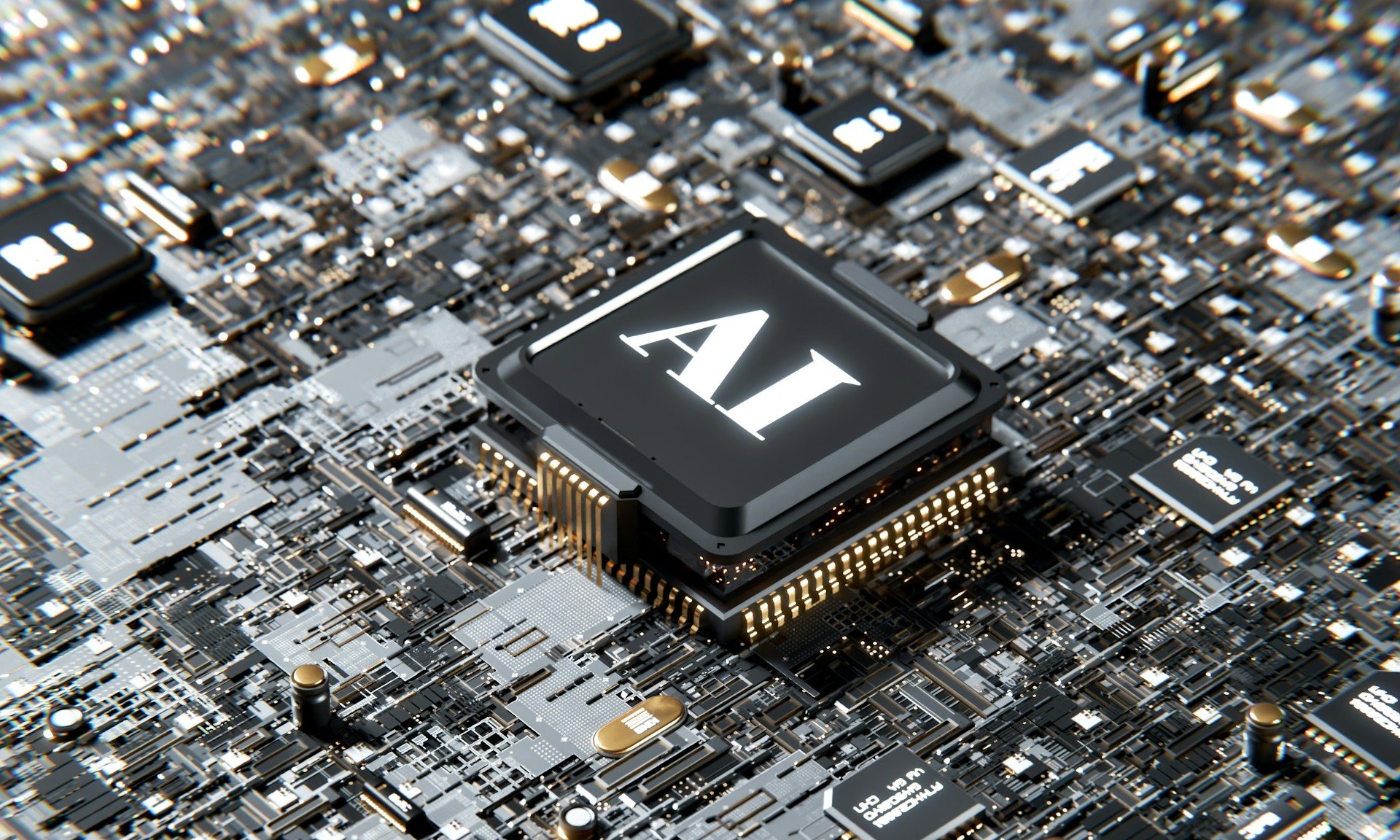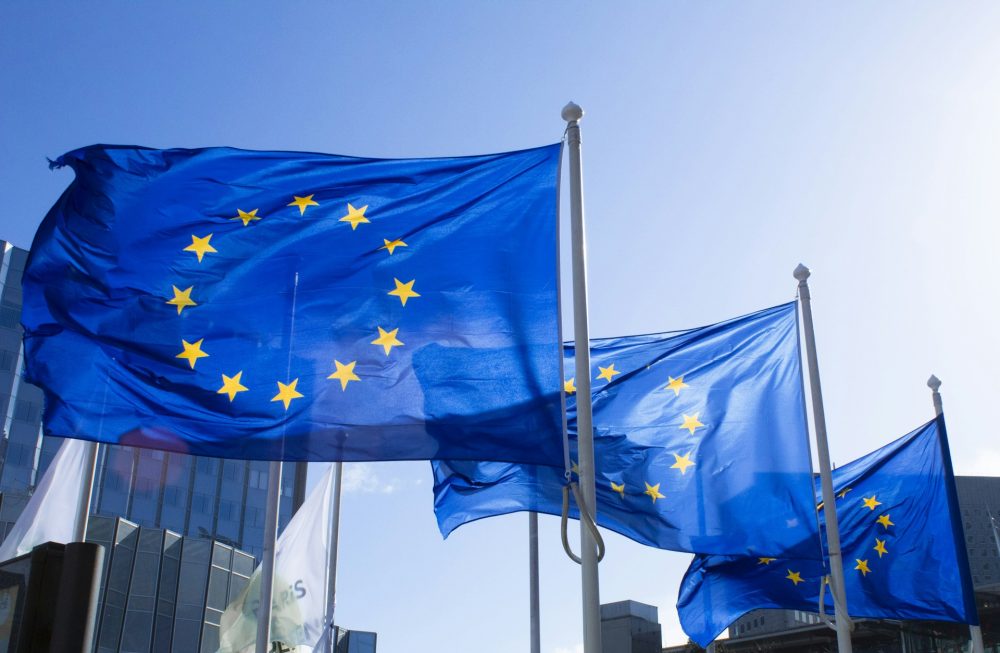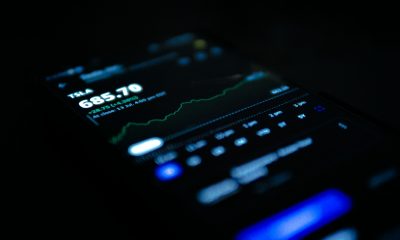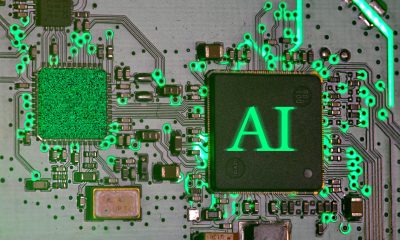Business
Microsoft Upgraded, Chip Targets Raised: 5 Major Analyst AI Moves
The past week has seen Microsoft, Tesla, and major chipmakers like Nvidia, AMD, and Broadcom receive bullish analyst upgrades as they deliver strong AI performance while demonstrating demand and future potential. However, despite bullish optimism, caution flags have been raised around a potential AI market bubble, with strategists urging broader index tracking over single-stock hype like Nvidia.

Over the past week, we’ve seen a flurry of analyst updates in the AI space. From upward revisions for chipmakers to bullish uprates for cloud providers, here are the most important analyst takes in AI this week.
KeyBanc Upgrades Microsoft as Strong Azure Growth “Solves All Problems”
KeyBanc Capital Markets upgraded Microsoft (NASDAQ:MSFT) to Overweight on Thursday, reversing its April downgrade and citing stronger-than-expected Microsoft Azure growth as the key factor that “solves all problems.”
The brokerage reinstated its price target at $630, saying Microsoft has “strengthened the bull case across nearly every front.”
The move follows Microsoft’s better-than-expected earnings, posting EPS of $3.65 vs. a $3.37 consensus, and revenue of $76.4 billion, beating the $73.79 billion estimate.
Cloud revenue hit $29.9 billion for the quarter.
KeyBanc emphasized the acceleration in Microsoft Azure as the main reason for the Microsoft upgrade: “Microsoft Azure growth accelerated by eight full percentage points in constant currency in H2, from 31% in January to 35% in March to 39% at year-end,” analysts wrote.
“The past two quarters have made the debate essentially moot for now,” they added.
Microsoft Azure beat expectations by $500 million and $700 million in the last two quarters—“like finding a Monday.com in your couch cushions,” KeyBanc quipped.
“With such beats, we don’t expect Microsoft Azure support costs to be a major debate for the rest of the year.”
The firm added that demand continues to outpace Microsoft Azure’s current capacity, pointing to further upside: “Better intra-quarter Azure, better outlook, better upside potential.”
Beyond cloud strength, KeyBanc praised Microsoft’s cost controls, noting “over 10,000 employees” have been laid off since the prior downgrade. It also noted that “there was no meaningful mention of macro headwinds on the earnings call.”
Microsoft Not Alone as AI Narrative Improves for Tesla: Wolfe Research
Wolfe Research stated that Tesla’s (NASDAQ:TSLA) investment story is increasingly centered on its AI and autonomy efforts, even as near-term prospects for its core automotive business remain pressured.
“This stock trades more on narrative than numbers,” analysts wrote. “Confidence in Tesla’s AI opportunities remains the most important driver.”
The brokerage highlighted several upcoming catalysts, including potential full self-driving (FSD) approvals in China and Europe, hands-free driving in parts of the U.S., and robotaxi developments.
Wolfe also noted that Tesla’s humanoid robot Optimus is targeted for mass production in 2026, with a long-term goal of 1 million units per year by 2030.
Despite these ambitions, the firm cut its EPS estimates for 2025 and 2026 to $1.62 and $1.67—well below consensus—citing a “challenging setup” ahead, particularly if demand for the Model 3 and Model Y weakens after U.S. EV tax credits expire at the end of 2025.
Tesla’s Energy division stood out as a relative bright spot: “We forecast Energy revenue will double in 2026 compared to 2024 (to ~$18B from $9.2B), with strong gross margins,” Wolfe said, citing Tesla’s scale and integration advantage as global battery storage demand outpaces supply.
“Energy success is critical in the medium term to avoid material cash burn,” the analysts added, especially amid falling regulatory credit sales and rising AI investments.
Morgan Stanley Raises Chip Targets Amid “Exceptional” AI Chip Demand
Morgan Stanley (NYSE:MS) raised its price targets on a group of semiconductor stocks, citing “exceptional” AI chip demand from hyperscalers and consumer internet firms.
The bank said rising investor enthusiasm is “justified by the long-term strength of the business,” and added that “our conviction in sustainable AI spending in 2026 continues to grow.”
Nvidia (NASDAQ:NVDA) remains the firm’s top pick, with a price target raised from $170 to $200. Analysts highlighted the Blackwell product cycle and demand outstripping supply.
“Supply bottlenecks will continue to dictate the growth pace, but supply should improve in H2,” they noted.
Broadcom (NASDAQ:AVGO) saw its target raised from $270 to $338, with Morgan Stanley calling it “the least controversial AI name,” citing its large addressable market and long-term growth potential.
Astera Labs Inc (NASDAQ:ALAB) was also raised, from $99 to $125, as the firm expects the stock to trade at a premium “due to its unique AI exposure.”
Marvell Technology (NASDAQ:MRVL) saw its target increased from $73 to $80, while AMD was raised from $121 to $185.
Although AMD (NASDAQ:AMD) holds a “somewhat secondary position in AI,” the firm noted momentum for its MI308 chip in China and improved PC visibility to “support a higher multiple.”
Strategist Warns How to Navigate an AI Bubble
The Sevens Report issued a market commentary Friday warning that a growing disconnect between AI chip stocks and the broader market could be an early sign of an “AI bubble.” The firm cautioned investors to watch the semiconductor sector closely for potential signs of a broader market peak.
“Every modern market bubble has been built on a narrative,” Sevens wrote. “The theme potentially inflating this bubble is undeniably AI tech.”
While Nvidia is often viewed as the key barometer for AI enthusiasm, Sevens argued that focusing on a single stock can be misleading.
“Many factors can influence individual stocks—including a ‘cult’… a dynamic that also appears to have emerged around NVDA,” Sevens noted.
Instead, the firm recommended tracking the Philadelphia Semiconductor Index (SOX), which includes a broader mix of AI-exposed chipmakers. “It would be much more prudent to keep an eye on the broader semiconductor index, the SOX.”
Despite the S&P 500’s strong gains since July 2024, the SOX has failed to hit new highs, raising questions about the rally’s durability.
“If AI remains the primary source of bullish sentiment… this market is in trouble and could face gravity sooner rather than later,” the firm added.
Sevens compared the broader market to Wile E. Coyote running off a cliff, suggesting the S&P 500 “may soon be about to face gravity.”
This Stock Is the Best TSMC Alternative, Says Bernstein
Samsung (KS:005930), not Intel (NASDAQ:INTC), is best positioned to become the top alternative to Taiwan Semiconductor Manufacturing (NYSE:TSM), according to Bernstein.
The brokerage said Samsung’s $16.5 billion chip partnership with Tesla supports its long-standing view that “the world needs a leading logic semiconductor producer besides TSMC, and Samsung… is better positioned than Intel to be that alternative.”
Although Tesla’s AI6 chip project could eventually expand beyond automotive applications, Bernstein estimates Samsung’s annual revenue from the deal will max out at $2–2.5 billion, with lifetime revenue around $8 billion—well below the $16.5 billion headline figure.
Still, comments from Elon Musk hint at broader use cases, potentially in robotics or other devices.
For Samsung’s underutilized foundry division, this deal could be a turning point. “$16.5 billion could boost Samsung Foundry revenue by 30–40%, with profitability impact likely even greater,” said Bernstein, citing especially low utilization at its Taylor, Texas plant.
For the broader market, Bernstein expects limited industrial impact. The Tesla chip deal would boost wafer fab equipment (WFE) demand by “low single-digit percentage at most,” analysts said.
As for TSMC, the impact is seen as minimal, with Tesla’s contribution to revenue described as negligible.
“Samsung, with comparable technologies, better cost structure, and more importantly, support from a memory business—and thus the ability to sustain investment—is better positioned than Intel,” Bernstein concluded.
__
(Featured image by Igor Omilaev via Unsplash)
DISCLAIMER: This article was written by a third party contributor and does not reflect the opinion of Born2Invest, its management, staff or its associates. Please review our disclaimer for more information.
This article may include forward-looking statements. These forward-looking statements generally are identified by the words “believe,” “project,” “estimate,” “become,” “plan,” “will,” and similar expressions. These forward-looking statements involve known and unknown risks as well as uncertainties, including those discussed in the following cautionary statements and elsewhere in this article and on this site. Although the Company may believe that its expectations are based on reasonable assumptions, the actual results that the Company may achieve may differ materially from any forward-looking statements, which reflect the opinions of the management of the Company only as of the date hereof. Additionally, please make sure to read these important disclosures.
First published in Investing.com. A third-party contributor translated and adapted the article from the original. In case of discrepancy, the original will prevail.
Although we made reasonable efforts to provide accurate translations, some parts may be incorrect. Born2Invest assumes no responsibility for errors, omissions or ambiguities in the translations provided on this website. Any person or entity relying on translated content does so at their own risk. Born2Invest is not responsible for losses caused by such reliance on the accuracy or reliability of translated information. If you wish to report an error or inaccuracy in the translation, we encourage you to contact us

-

 Impact Investing2 weeks ago
Impact Investing2 weeks agoEU Expands Leadership in Sustainable Finance with Record Green Bond Impact
-

 Cannabis14 hours ago
Cannabis14 hours agoMedical Cannabis in Poland 2025: Growth, Stability, and Wider Access
-

 Impact Investing1 week ago
Impact Investing1 week agoEU End-of-Life Vehicles Rule Pushes Cars Toward a Circular Economy
-

 Crowdfunding2 weeks ago
Crowdfunding2 weeks agoFlower Burger Launches Crowdfunding to Fuel Growth in Booming Plant-Based Market
























